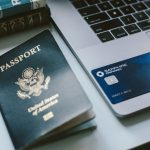In an era where our digital lives are marked by convenience and connectivity, the lurking threat of malware, spyware, and unwanted files has never been more pronounced. Imagine opening your computer to find a labyrinth of cluttered files that not only drain your storage but also jeopardize your security. Enter SuperAntiSpyware—an essential tool designed to help you reclaim control over your system and breathe life back into its performance. But how do you navigate the labyrinth it uncovers?
In this article, we’ll delve into effective strategies for efficiently eliminating hundreds of files flagged by SuperAntiSpyware. From understanding what these files are and why they matter to mastering the art of precise removal without losing important data, this guide aims to empower you on your quest for a cleaner, safer digital environment. Whether you’re a tech novice or a seasoned pro, get ready to take charge and transform your device into a safe haven once again!
What is SuperAntiSpyware?
SuperAntiSpyware stands out in the crowded realm of cybersecurity tools with its dual approach to combating malicious software. It not only provides powerful scanning and detection capabilities but also integrates real-time protection technologies that proactively shield your system from emerging threats. Users appreciate its ability to target spyware, adware, trojans, and various other forms of malware that traditional antivirus solutions might overlook. This versatility makes it a vital ally for anyone seeking a comprehensive defense against malware.
What sets SuperAntiSpyware apart is its user-friendly interface combined with advanced functionalities like deep scans and customizable removal options. Many users are surprised by how many hidden files lurk on their systems; these files can slow performance or compromise privacy. SuperAntiSpyware’s detailed reports offer transparency about just what it has uncovered, helping users make informed decisions about the cleanup process. In an era where digital security is paramount, being equipped with an intuitive yet robust tool like SuperAntiSpyware can prevent potential breaches and improve overall system integrity dramatically.
 Identifying Files for Elimination
Identifying Files for Elimination
Identifying files for elimination can be a daunting task, especially when dealing with the vast number of entries SuperAntiSpyware uncovers. The key lies in understanding what types of files pose threats versus those that contribute to your system’s efficiency. Take the time to categorize detected files into actionable groups—adware, potentially unwanted programs (PUPs), and true malware each require distinct approaches for handling. By focusing on these categories, you not only streamline your elimination process but also enhance your ability to make informed decisions about what remains on your machine.
Another effective strategy is leveraging the software’s detailed reports which provide insight into file locations and behavior patterns. This deeper analysis often reveals hidden threads within established applications or repeated intrusions from familiar sources. Additionally, consider using a secondary verification tool before finalizing deletions; this practice eliminates guesswork by cross-referencing file legitimacy with trusted databases. Embracing this meticulous mindset not only safeguards against accidental removal of essential files but also empowers you as a proactive defender against digital clutter and security vulnerabilities.
Preparing Your System for Cleanup
Before diving into the cleanup process with SuperAntiSpyware, it’s crucial to prepare your system to ensure a smooth and effective experience. Start by backing up important files and documents. While the software is designed to target unwanted files, there’s always a slim chance that legitimate items may be caught in the crossfire during removal. Creating a safety net will not only give you peace of mind but also save you from potential headaches down the line.
Next, take some time to declutter your desktop and organize your folders. A disorganized workspace can make it challenging to identify which files are unnecessary or potentially harmful. By sorting through your files beforehand, you’ll gain better insight into what truly needs attention during the scanning process. Utilize built-in tools like disk cleanup utilities or third-party applications for an initial sweep—this will allow SuperAntiSpyware to focus more effectively on deeper issues rather than surface-level clutter. Lastly, ensure all other applications are closed while preparing for a thorough scan; this minimizes conflicts and optimizes system resources for maximum efficiency as you embark on eliminating those pesky threats.
 Step-by-Step File Removal Process
Step-by-Step File Removal Process
Once you’ve launched SuperAntiSpyware and run a thorough scan, it’s time to tackle the identified files. Begin by examining the list of detected threats carefully; this step is crucial as it allows you to distinguish between potentially harmful files and those that may be critical for your system’s operation. If you’re uncertain about any entries, a quick online search can provide clarity on the implications of removing specific files—empowering you with knowledge as you proceed.
Next, initiate the removal process by selecting the unwanted files and clicking on the ‘Delete’ or ‘Quarantine’ option. Quarantining is an excellent middle-ground strategy if you’re hesitant about permanent deletion; it isolates suspicious files while allowing you to restore them later if necessary. After removal, remember to reboot your machine—it ensures that all changes take effect and helps maintain optimal performance post-cleanup. Finally, conducting another scan once everything is cleared not only assures peace of mind but also serves as a proactive approach in preventing future infestations.
Best Practices for Maintaining Clean Files
To maintain clean files on your computer, adopting a structured approach is essential. Start by organizing folders logically, categorizing documents into relevant sections—personal, work-related, and projects. This not only simplifies access but also facilitates the regular review of file contents. Employ automated tools that archive or delete old files after a certain period; these can help you stay clear of clutter without needing constant oversight.
Another pivotal practice is to adopt a consistent naming convention for your files. Clear and descriptive names make it easy to locate specific documents while minimizing duplicates. Invest time in scheduling weekly or monthly maintenance sessions where you can assess the necessity of each file; this proactive approach will empower you to identify and remove items you no longer need before they accumulate. Lastly, consider utilizing cloud storage for important but rarely accessed files, ensuring that your local drive remains efficient and fast while allowing for seamless retrieval when necessary.
 Troubleshooting Common Issues Encountered
Troubleshooting Common Issues Encountered
When dealing with the removal of hundreds of files flagged by SuperAntiSpyware, it’s not uncommon to face a few hiccups along the way. One frequent challenge is encountering stubborn files that resist deletion or continue to reappear after you think they’ve been eliminated. In such cases, ensure that you’re running SuperAntiSpyware with administrative privileges; this can provide deeper access to your system and increase the chances of successful file removal. Additionally, consider booting your computer in Safe Mode before scanning again — this limits other software from running and helps neutralize any active threats.
Another issue users may run into is confusion over false positives. Certain files may be flagged as malicious even though they are legitimate components of applications you use regularly. To address this, take advantage of the “Ignore” or “Exclude” options within the program carefully; however, always do so judiciously—research each identified file online before deciding to ignore it permanently. Keeping an organized record of these deliberations helps prevent potential mishaps down the line and fosters a better understanding of what really lives on your system. By being proactive in troubleshooting these common issues, you’ll not only enhance your overall security but also streamline future scans for optimal performance!
Conclusion: Enjoy a Cleaner, Faster System
As you navigate the digital landscape, it’s vital to remember that a cleaner system not only amplifies performance but also enhances your overall peace of mind. When you diligently eliminate thousands of files identified by SuperAntiSpyware, you are essentially shedding unnecessary weight from your computer’s processes. This decluttering isn’t merely about recovering storage space; it’s about revitalizing your device and creating an environment conducive to productivity and creativity.
Moreover, consider this: every file left unchecked could potentially harbor security risks or unwanted software that may hinder your system’s efficiency. Regular maintenance through tools like SuperAntiSpyware empowers you to take control over your technology rather than letting it dictate terms. Embracing this proactive approach leads not just to a smoother running system but also cultivates a habit of digital hygiene—one that significantly reduces the chances of encountering issues down the line. As you revel in the benefits of a tidy workspace, remember how these practices can enhance both your online safety and computing experience for years to come.
 logo
logo



